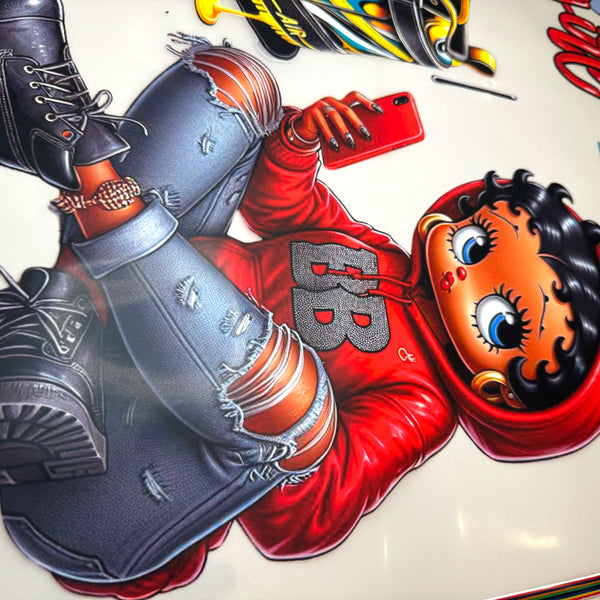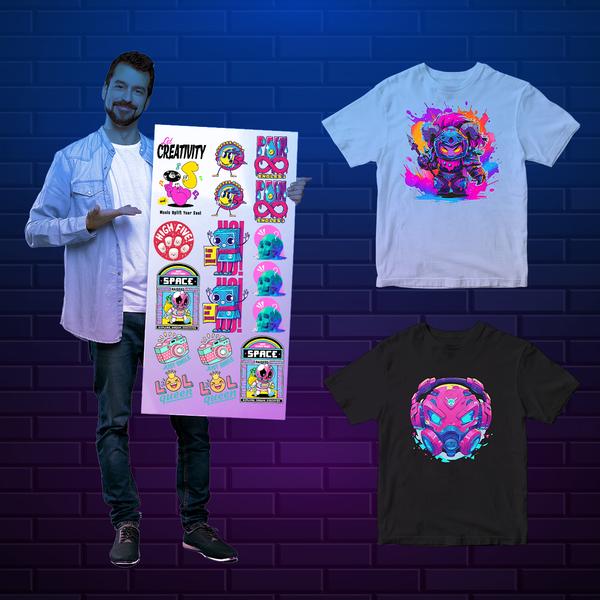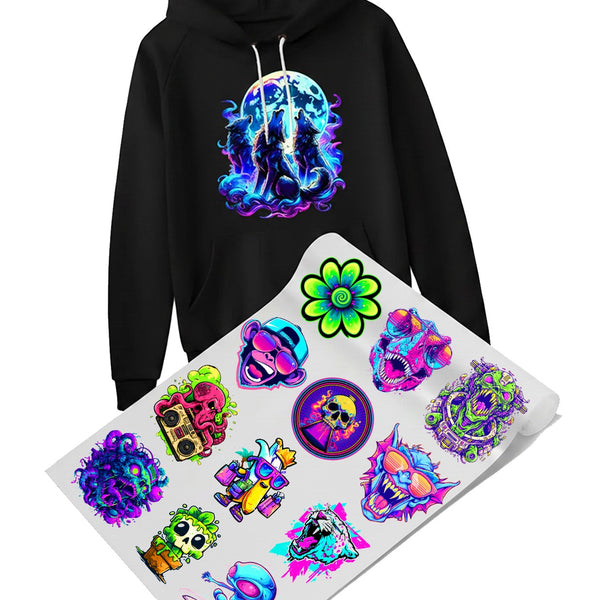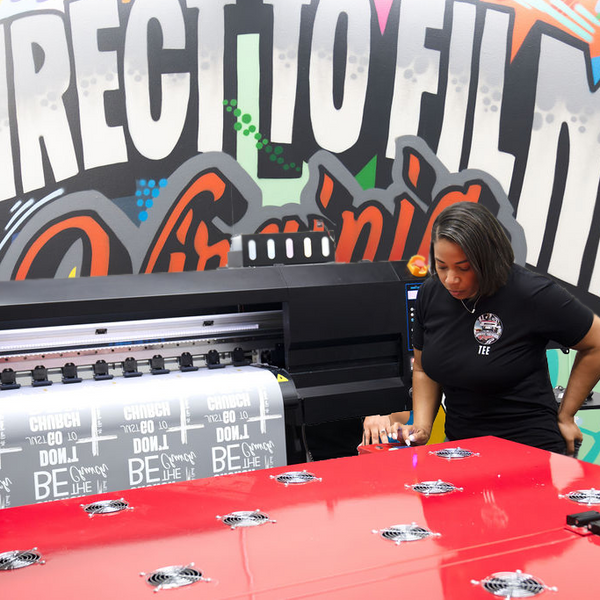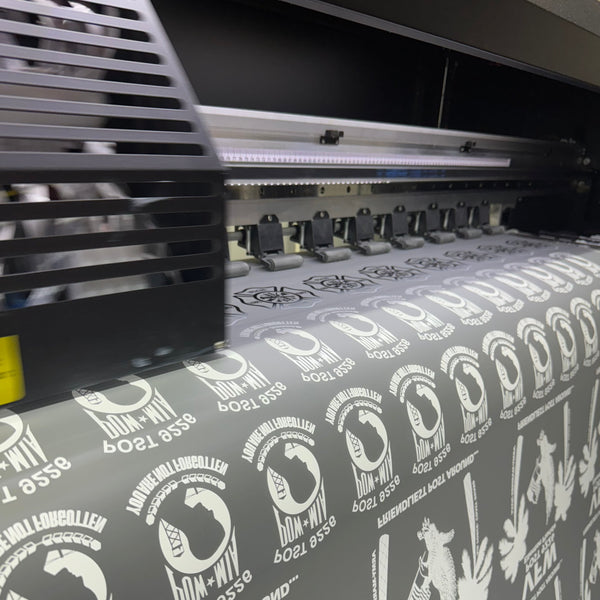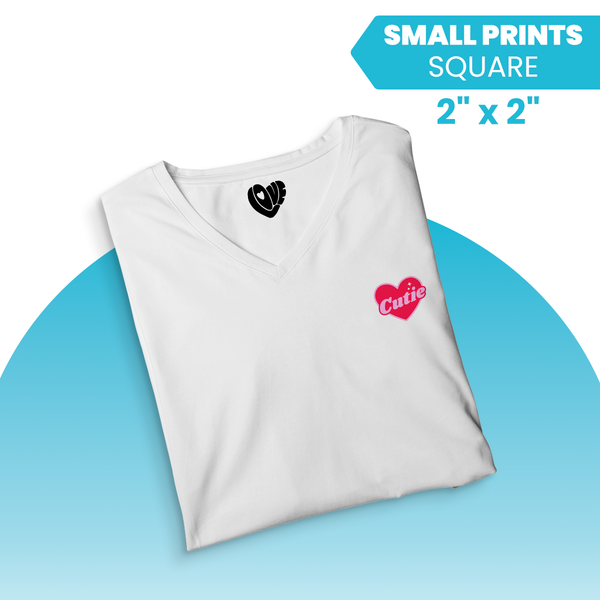Choosing the correct printing method for custom apparel can be challenging, especially since DTF and Sublimation are two of the industry's most popular options. Both methods offer vibrant, durable prints but cater to different needs and materials.
Suppose you're a business looking for custom printing solutions for t-shirts, hoodies, and other apparel. In that case, understanding the differences between DTF (Direct to Film) and sublimation printing will help you make the best decision for your brand or clients.
This guide compares DTF printing and sublimation printing, explaining how each process works, its pros and cons, and which is best for different applications.
What is DTF Printing?
DTF (Direct to Film) printing is an innovative method that allows for high-quality transfers on various fabrics. It involves printing a design onto a special PET film using DTF powder, which is then heat-pressed onto the garment.
How DTF Printing Works
1️⃣ Printing – The design is printed onto a special PET film using a DTF printer with CMYK and white inks.
2️⃣ Powder Application – A layer of DTF powder (adhesive powder) is applied to the wet ink.
3️⃣ Curing – The powder is melted using a heat press or curing oven to bond it to the ink.
4️⃣ Transfer to Fabric – The film is heat-pressed onto the fabric, bonding the design securely.
5️⃣ Peeling – The film is peeled away, leaving a vibrant, durable print behind.
Benefits of DTF Printing
✅ Works on Almost Any Fabric – Unlike sublimation, DTF printing is compatible with cotton, polyester, blends, and even dark-colored fabrics.
✅ Vibrant & Detailed Prints – Prints come out with high detail, bold colors, and sharp edges.
✅ Soft & Flexible Finish – DTF transfers feel soft to the touch and move with the fabric.
✅ Durability – Prints are long-lasting, resisting cracking and fading even after multiple washes.
✅ No Pre-Treatment Needed – Unlike some printing methods, DTF does not require fabric pre-treatment, making production faster.
What is Sublimation Printing?
Sublimation printing is a process that uses heat and pressure to turn solid dye into a gas, bonding it to polyester-based fabrics. This results in a permanent, vibrant print that is embedded into the fabric rather than sitting on top of it.
How Sublimation Printing Works
1️⃣ Design Printing – The artwork is printed onto sublimation paper using special sublimation inks.
2️⃣ Heat Transfer – The paper is placed on a polyester garment or coated substrate and heated to high temperatures (around 400°F).
3️⃣ Ink Sublimation – The heat turns the solid ink into gas, embedding it into the fabric.
4️⃣ Cooling & Completion—The print becomes part of the fabric once cooled, resulting in a permanent, lightweight design.
Benefits of Sublimation Printing
✅ Ultra-Soft Feel – The print feels weightless because the ink embeds into the fabric rather than sitting on top.
✅ Vibrant & Full-Color Prints – Sublimation prints are bold, detailed, and full-color without extra layers.
✅ Long-Lasting – The design won't fade, crack, or peel as it becomes part of the fabric.
✅ Perfect for Polyester Apparel – Sublimation Shirts made from 100% polyester hold the best quality prints.
Comparison of DTF vs. Sublimation Printing
✔ DTF Printing
- Works on cotton, polyester, blends, and dark fabrics
- Uses DTF powder for adhesion
- Highly durable, stretchable, and long-lasting
- Vibrant prints with a wider color range
- Soft feel with no heavy layering
- Requires heat press for application
✔ Sublimation Printing
- Works only on polyester and light-colored fabrics
- Infuses sublimation print into fabric
- Incredibly soft, with no extra layer on fabric
- Bright and vivid colors, but no white ink
- Best for polyester shirts and promotional products
- Not ideal for cotton or dark garments
Which Printing Method Should You Choose?
The choice between DTF vs sublimation depends on the type of material, the end-use of the product, and the printing effect you want to achieve.
Choose DTF Printing If:
✅ You need prints on cotton, polyester, blends, or dark-colored garments
✅ You want a versatile, durable, and flexible print
✅ You're producing high-detail, multi-color designs
✅ You want a process that doesn't require pre-treatment
Choose Sublimation Printing If:
✅ You're printing on light-colored polyester garments
✅ You want a permanent, embedded print with no texture
✅ You need vibrant, full-color prints for sportswear or promotional apparel
✅ You don't need to print on cotton or dark-colored fabrics
Final Thoughts: DTF vs Sublimation – Which One Wins?
Both DTF Printing and Sublimation Printing have their strengths, but the best option depends on your needs.
• If you need flexible fabric choices, DTF printing is the clear winner. It works on cotton, blends, polyester, and dark colors.
• If you're printing on polyester apparel and want an ultra-soft feel, sublimation printing is the best choice.
At DTF Virginia, we specialize in high-quality DTF printing that delivers vibrant, durable designs for any fabric. Whether you're looking for DTF powder-based transfers, sublimation prints, or custom apparel solutions, we've got you covered.
👉 Need help choosing the correct printing method? Contact us today to discuss your project!
Ready to Order?
Explore our printing options:





